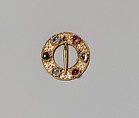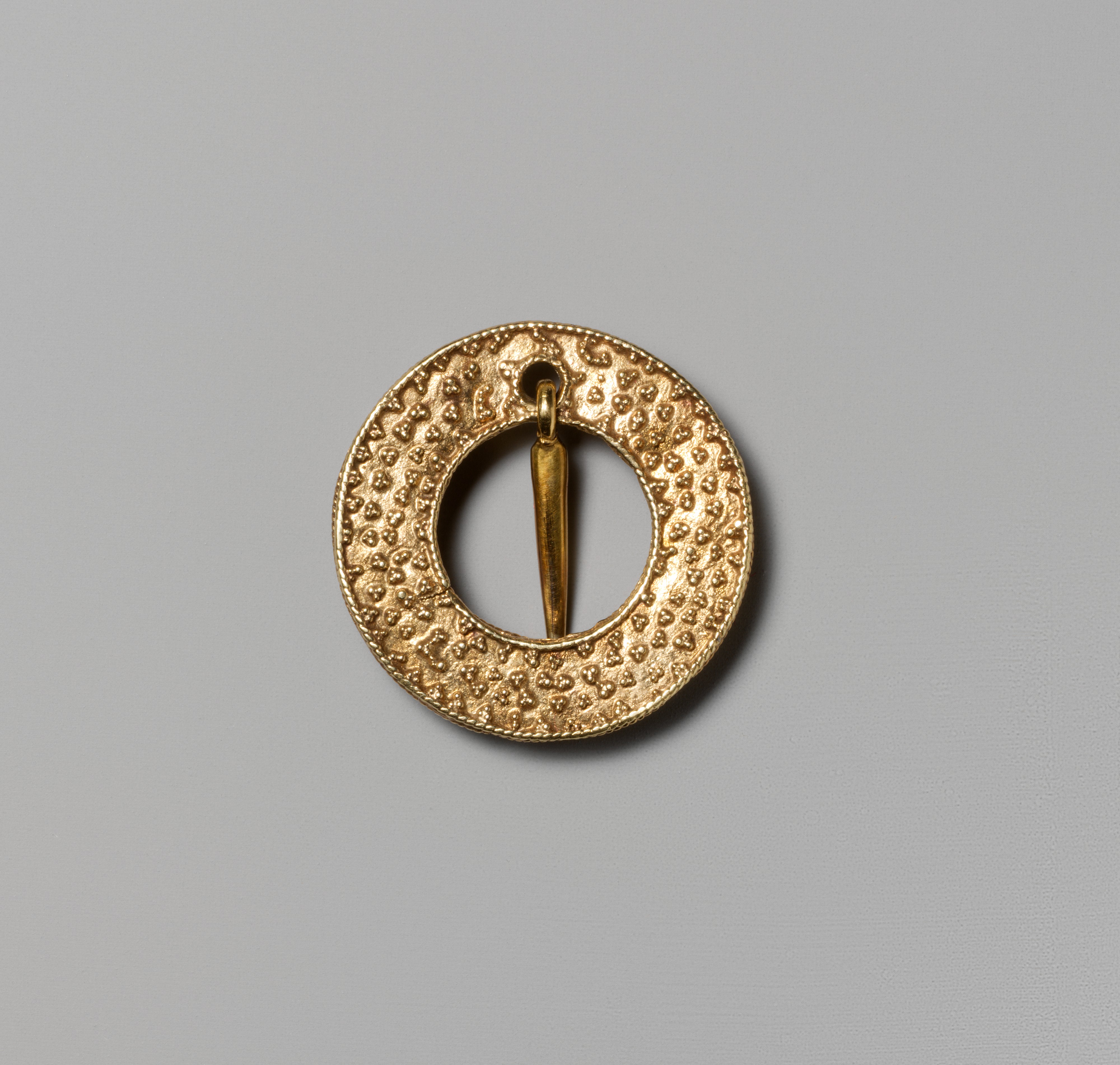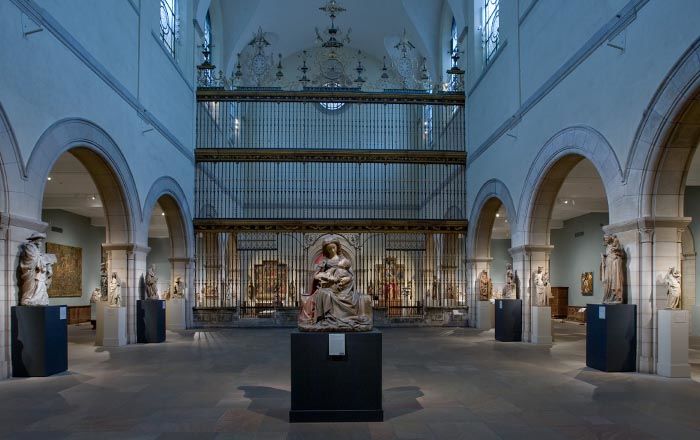Ring Brooch
This brooch comes from a treasure unearthed in 1969 on a farm near Lingenfeld, in the Rhineland, about sixty miles north of Strasbourg. Set inside a terracotta vessel were silver objects, including a double cup and a letter-shaped jewel similar to ones in The Cloisters Collection (1983.125a, b; 1986.386), as well as gilded silver rings. The coins in the hoard date to the time of the Plague, which struck Europe with devastating ferocity in 1348. It is estimated that one third of the entire population of Europe died from the pandemic. Princes and paupers, Christians, Jews and Muslims all succumbed to the Plague. Compounding the horror, Jewish communities in the Rhineland were scapegoated and put to death by their Christian neighbors. Did this treasure, like other jewelry from this same period found in the region, belong to a Jewish citizen fleeing persecution, or was it buried for safekeeping by someone who fell victim to the Black Death?
This image cannot be enlarged, viewed at full screen, or downloaded.
This artwork is meant to be viewed from right to left. Scroll left to view more.




